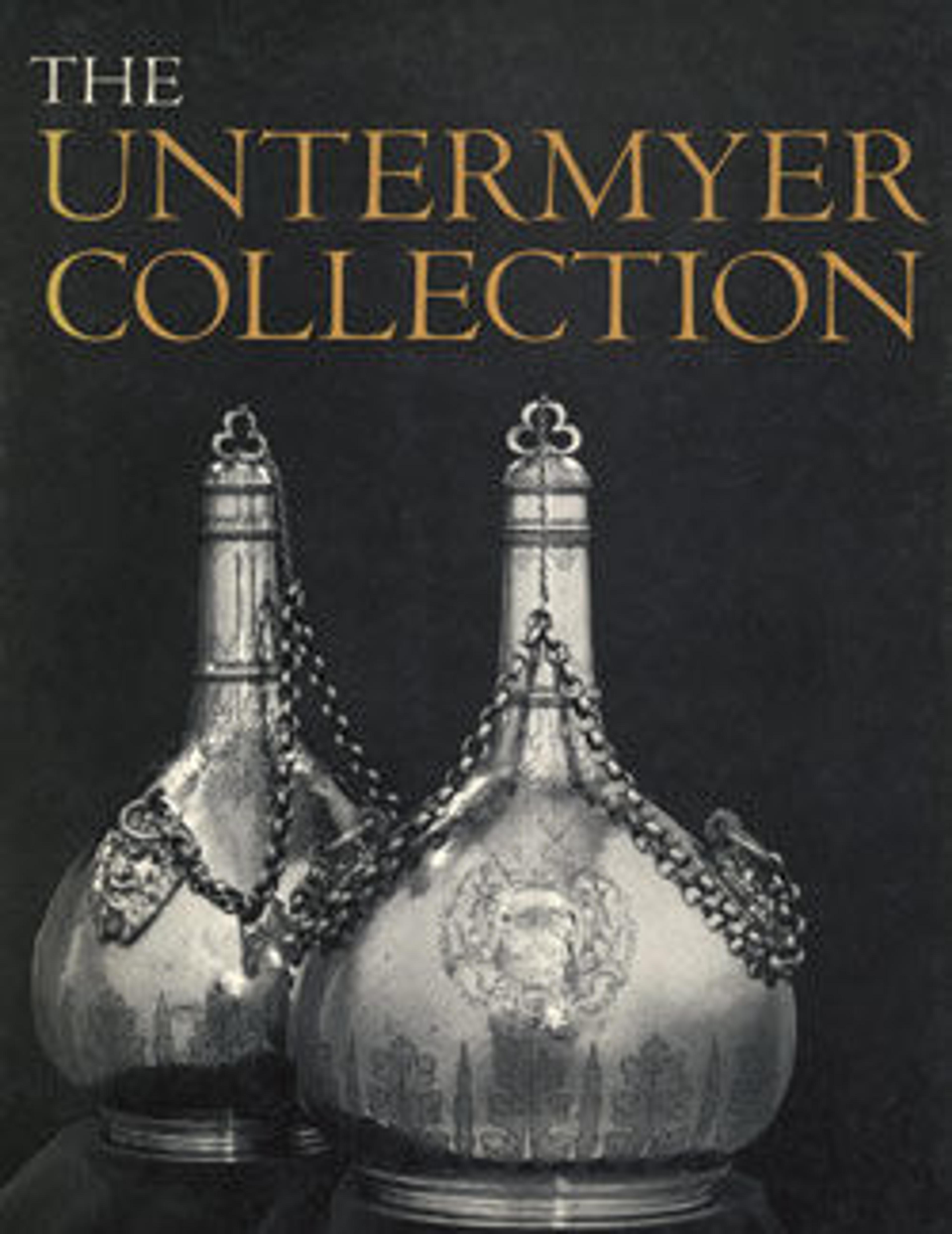Table carpet fragment
Textiles were rarely used as floor coverings in the late sixteenth century, except by the wealthiest individuals, but "carpets" of pile weaves, tapestry weaves, or embroidery were often used to decorate tables. This fragment of a large table carpet displays strapwork motifs typical of other English sixteenth-century decorative arts such as wood carving and plaster decoration, and the ripe fruits, flowers, and vegetables are varieties that often appear on embroidered objects of the period. These include Tudor roses, pomegranates, pears, squash, honeysuckle, and grapes.
The somewhat awkward drawing of the armorials suggests that this was not the product of a professional workshop. The table carpet may have been an amateur or semi-professional production, perhaps made by servants and extended family members for use in their own home. However, this project was no small undertaking; when complete, the carpet might have measured as much as twelve to fifteen feet in length.
The somewhat awkward drawing of the armorials suggests that this was not the product of a professional workshop. The table carpet may have been an amateur or semi-professional production, perhaps made by servants and extended family members for use in their own home. However, this project was no small undertaking; when complete, the carpet might have measured as much as twelve to fifteen feet in length.
Artwork Details
- Title: Table carpet fragment
- Date: late 16th century
- Culture: British
- Medium: Canvas worked with wool and silk thread; tent stitch
- Dimensions: L. 77 x W. 38 inches (195.6 x 96.5 cm)
- Classification: Textiles-Embroidered
- Credit Line: Gift of Irwin Untermyer, 1954
- Object Number: 54.7.8
- Curatorial Department: European Sculpture and Decorative Arts
More Artwork
Research Resources
The Met provides unparalleled resources for research and welcomes an international community of students and scholars. The Met's Open Access API is where creators and researchers can connect to the The Met collection. Open Access data and public domain images are available for unrestricted commercial and noncommercial use without permission or fee.
To request images under copyright and other restrictions, please use this Image Request form.
Feedback
We continue to research and examine historical and cultural context for objects in The Met collection. If you have comments or questions about this object record, please contact us using the form below. The Museum looks forward to receiving your comments.
